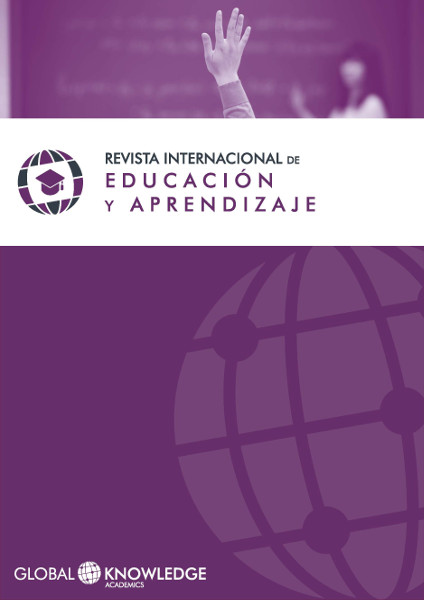Teaching and learning of the environment from the potential of the school microenvironments
DOI:
https://doi.org/10.37467/gka-revedu.v5.1355Keywords:
Community, Microenvironment, Inclusion Learning, Natural EnvironmentAbstract
The experience that is presented evidences the aspects that characterize the school microenvironment and its implementation in the methodological work of the "Paiguara" Millennium Educational Unit of the San Antonio community in the canton of Gualaceo, taking into account the strategies of inclusion of the Kichwa children, to promote the study and sensitization towards the conservation of natural resources, which makes possible a better understanding for its implementation in integration with the process that that takes place in Ecuador. The different terms that have been used that try to limit geographical spaces are addressed.
Downloads
Global Statistics ℹ️
|
761
Views
|
465
Downloads
|
|
1226
Total
|
|
References
Cuétara López, R: Metodología para el estudio de la localidad. Didáctica de la Geografía. Colección PROMET. Editorial Academia. La Habana, 1997.
Mc Pherson, S. M: Dimensión Ambiental. Planeamiento Curricular. Estrategia para su incorporación en la Licenciatura en Educación. Tesis en opción al Título de Master en la Educación Superior. La Habana, 2004.
García, R.M. Una propuesta para el mejoramiento de la introducción de la dimensión ambiental por vía curricular en Secundaria Básica. Tesis en Opción a Master en Investigaciones Educativas, Holguín, 2009.
Alvarez, I.F. Vocabulario de Ecología. Editorial Mejoras Ltda. Barranqilla, Colombia, 1995.
Valdés, V.O. La educación ambiental en las escuelas ubicadas en las áreas protegidas: gran Parque Nacional Sierra Maestra, gran Parque Sierra del Escambray y Sierra del Rosario, V Seminario Nacional de Educación Ambiental, MINED, Camagüey, 1989.
Rodríguez, R., M., Potencialidades del microambiente escolar para el desarrollo de la educación ambiental en la enseñanza preuniversitaria. Revista digital Instituto Pedagógico Latinoamericano y Caribeño (IPLAC) No 3. Septiembre – diciembre, 2009.
UNAE. Modelo Pedagógico. Azogues, Ecuador: Universidad Nacional de Educación, 2014.
Álvarez González, F. J. Universidad Emblemática de formación de maestros y maestras para el Buen Vivir. Un acercamiento a una propuesta de identidad. En F. J. Álvarez González, H. Quinn, Á. Pérez Gómez, J. Prats, A. Didirksson, F. Peñafiel, & S. Fernández de Córdova, Hacer bien, pensar bien y sentir bien. Azogues, Ecuador: Universidad Nacional de Educación, 2015, pág. 223
Freire, P. A la sombra de este árbol (Primera edición ed.). Barcelona, España: El Roure Editorial S.A. Primera edición, 1997.
Napoleón Almeida. HISTORIA DE LA PARROQUIA SAN JUAN DE GUALACEO http://www.sanjuandelcid.com/p/historia-de-la-parroquia-san-juan-de.html#.V4G_76Lcqeg
Gobierno Autónomo Descentralizado del Cantón Gualaceo. Plan de Desarrollo de Ordenamiento Territorial. 2014-2019.
Patricio Miller Revista Cuenca Ilustre – Ecuador https://patomiller.wordpress.com/tag/santa-barbara/, 2013.
Alonso González, H., González Bermúdez, F. M., Fontanela Rizo, J. L., De Armas, De Armas, L. F., Espinosa, J., Herrera Oliver, P. Biodiversidad de Cuba. Ciudad de Guatemala. Guatemala. Ediciones Polymita, S.A, (2007).
Sarmiento, M., Inclusión a los niños kichwa parlantes en las Unidades Educativas del Milenio. Universidad Nacional de Educación (UNAE). Ecuador – Cañar, 2015.
Downloads
Published
How to Cite
Issue
Section
License
Those authors who publish in this journal accept the following terms:
-
Authors retain copyright.
-
Authors transfer to the journal the right of first publication. The journal also owns the publishing rights.
-
All published contents are governed by an Attribution-NoDerivatives 4.0 International License.
Access the informative version and legal text of the license. By virtue of this, third parties are allowed to use what is published as long as they mention the authorship of the work and the first publication in this journal. If you transform the material, you may not distribute the modified work. -
Authors may make other independent and additional contractual arrangements for non-exclusive distribution of the version of the article published in this journal (e.g., inclusion in an institutional repository or publication in a book) as long as they clearly indicate that the work was first published in this journal.
- Authors are allowed and recommended to publish their work on the Internet (for example on institutional and personal websites), following the publication of, and referencing the journal, as this could lead to constructive exchanges and a more extensive and quick circulation of published works (see The Effect of Open Access).













